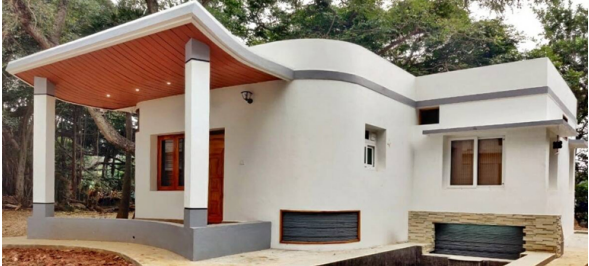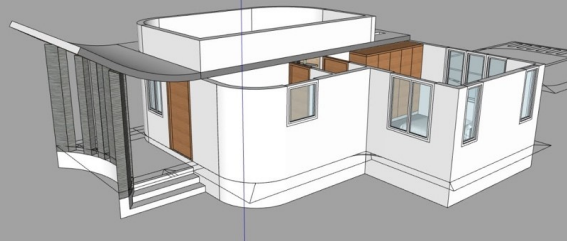Revolutionizing Housing: India's First 3D Printed House Unveiled at IIT-Madras
In a groundbreaking moment for Indian architecture and construction, IIT-Madras startup Tvasta proudly inaugurated India's first 3D printed house on the campus premises. This innovative dwelling, boasting a spacious 600 square feet layout, comprises a bedroom, hall, and kitchen, marking a significant leap forward in housing technology and design

The entire house was meticulously crafted using cutting-edge software and constructed utilizing concrete 3D printing technology. This groundbreaking approach not only accelerates the construction process but also significantly reduces costs, with the potential to slash expenses by up to 30% compared to traditional building methods. Additionally, the durability of these structures is unparalleled, with a projected lifespan exceeding 50 years. Concrete 3D printing represents a revolutionary automated manufacturing technique that enables the construction of real-life structures in a layer-by-layer manner. By employing a specialized concrete 3D printer, users can transform computerized three-dimensional design files into tangible structures, offering unprecedented flexibility and efficiency.

During the virtual inauguration ceremony, Finance Minister Nirmala Sitharaman underscored the transformative potential of this technology, emphasizing its capacity to address India's pressing housing needs with unprecedented speed and efficiency. With the ability to erect a new house in just five days, compared to the months required by conventional methods, concrete 3D printing presents a promising solution to India's housing crisis. IIT-Madras Director Bhaskar Ramamurthi highlighted the scalability and accessibility of this technology, likening it to rental borewells utilized by farmers. This innovative approach not only ensures high-quality construction but also provides price assurance for customers, democratizing access to affordable housing solutions.

Adithya VS, Co-founder and CEO of Tvasta, emphasized the transformative impact of this technology, heralding a new era of personalized and affordable housing for all Indians. Beyond addressing housing shortages, concrete 3D printing holds the potential to tackle a myriad of societal challenges, including sanitation, disaster relief, and military infrastructure projects. Developed in collaboration with Habitat for Humanity's Terwilliger Centre for Innovation in Shelter, this pioneering project underscores the power of partnership and innovation in driving positive social change. As India embraces the era of 3D printed housing, the possibilities for transformative impact are limitless, promising a brighter future for communities across the nation.

